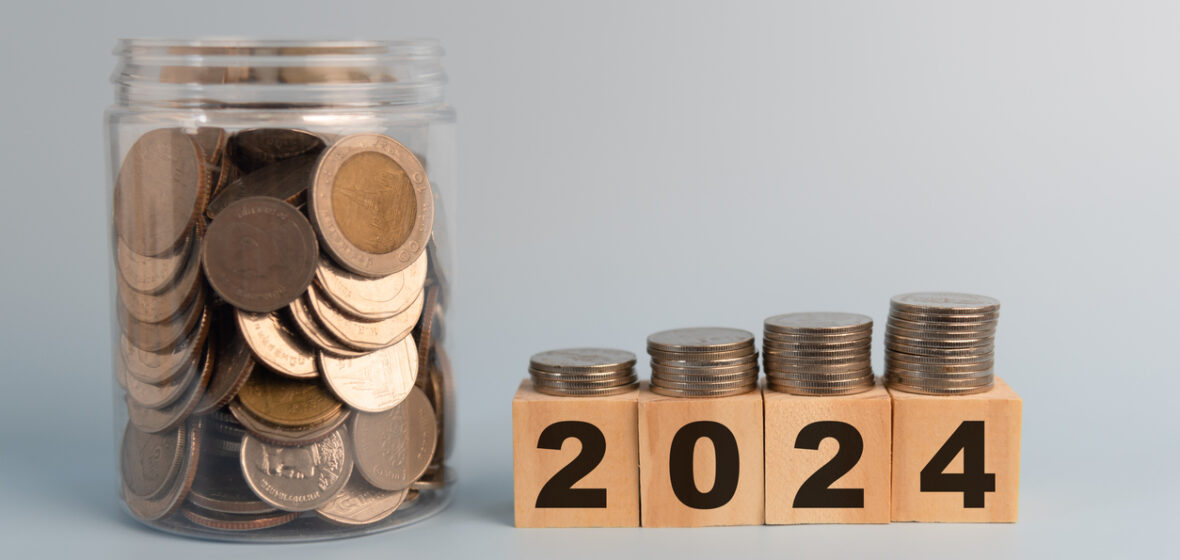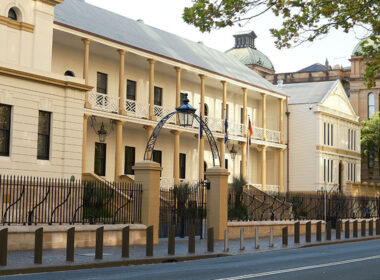Treasurer Jim Chalmers’ third federal budget reflects many of the same priorities as last year’s budget while also addressing global geopolitical concerns through increased defence spending.
Treasurer Jim Chalmers’ third federal budget reflects many of the same priorities as last year’s budget while also addressing global geopolitical concerns through increased defence spending. The budget, released on Tuesday 14 May, has committed to spending on protective and responsive measures for women victims of male violence that critics have noted fall short of supporting frontline domestic violence services.
In the lead up to Budget night, the government made clear that its main concerns are the Stage 3 tax cuts, defence and tertiary education commitments.
LSJ outlines key budget facts and seeks responses from experts on their effectiveness and rationale.
Stage 3 Tax Cuts
The Treasurer had already announced Stage 3 income tax cuts, which come into effect on July 1 2024, and mostly benefit middle-income earners, following criticism of the original plan which favoured high-income earners. The new four-tier system means taxpayers are benefited by an average of $36 a week from July through:
- A cut in the 19 per cent tax rate to 16 per cent, saving $804 for those on taxable incomes of $45,000
- A cut in the 32.5 per cent rate to 30 per cent for incomes between $45,000 and $135,000
- Retaining the 37 per cent rate but increasing the threshold for it to apply to $135,000.
- Retaining the current 45 per cent tax rate but increasing the threshold to $190,000 ($10,000 less than in the original design)
Gender pay gap and women’s workforce participation
Gender equality remains elusive in many Australian workplaces. The Workplace Gender Equality Amendment (Closing the Gender Pay Gap) Bill 2023 put the onus on employers to examine and repair the disparity between pay and benefits for male workers versus female employees.
According to the Workplace Gender Equality Agency, the annual 2022-2023 Census indicated a 21.7 per cent remuneration gender pay gap, attributed to a higher proportion of women in upper pay quartiles and management roles, though the number of women CEOs remained stagnant at 22 per cent of all CEOS.
A gender pay gap of more than 5 per cent remained in place across 73 per cent of employers spanning all industries, with construction the most prominent (men earn close to 30 per cent more than women in the same positions).
The WGEA report in 2023 indicated that women’s superannuation upon retirement continues to lag behind men’s owing to unpaid super on parental leave. In its pre-Budget Submission to Treasury, Chief Executive Women (CEW) called for immediate government action to invest in universal early childcare education, to modernise paid parental leave, financially support carers, increase JobSeeker, and update the taxation system to better support working parents.
The Government has already announced that it will pay super on government paid parental leave.
CEW research found that if women were better catered to by industry, through equal pay and flexible arrangements, in addition to targeted government policies, they could represent one million additional full-time skilled workers.
Women’s legal services and safety
Women’s Legal Services Australia (WLSA) sought additional funding of $25 million in the Federal Budget for women’s legal services across Australia.
Lara Freidin, Executive Officer of WLSA, says, “Women’s Legal Services assisted over 25,000 clients in the 2022-23 financial year. Data collected by the 13 Women’s Legal Services nationally found that 1,018 attempts to receive assistance were turned away during a 5-day period, which means we estimate more than 52,000 will be turned away by Women’s Legal Services per year. Based on these two figures we can estimate that Women’s Legal Services are approached by around 77,000 women per year.”
The budget commits “$44.1 million in 2024–25 to support the National Legal Assistance Partnership and Family Violence Prevention Legal Services, including one-year indexation supplementation to the funding for Legal Aid Commissions, Community Legal Centres, Aboriginal and Torres Strait Islander Legal Services, and additional funding to address community legal sector pay disparity.”
Following a national cabinet meeting on 1 May, the government committed $925 million in assistance to victims of violence to leave abusive relationships, a legislative ban on deepfake pornography, and $6.5 million in protective measures to ensure children and young people cannot be the recipients of pornographic and misogynistic content.
The leaving violence payment is $5,000, but in a trial that has run for just over three years, the majority of applicants were refused due to failing eligibility requirements and only women who can prove both financial stress and a change in living arrangements owing to partner violence in the preceding 12 weeks can apply for the payment.
At the same time, frontline services for domestic violence are underfunded and incapable of meeting the rising demand for help.
At the National Press Club, economist Dr Angela Jackson called on the federal government to address exacerbating factors in family violence, including homelessness, cost of living stress, housing insecurity, and insufficient support payments for single parents, including JobSeeker.
Further, there’s $19.4 million over two years to establish a National Student Ombudsman to help to eradicate gender-based violence from universities; $18.7 million over four years to establish a National Higher Education Code to Prevent and Respond to Gender-Based Violence; $13.1 million to support refugee and migrant women, including funding for the Settlement Engagement and Transition Support program and to support for visa holders experiencing domestic and family violence; and $11.7 million over two years to extend the First Nations Family Dispute Resolution pilot to support culturally-safe family dispute resolution services.
Housing
Leo Patterson Ross, Chief Executive Officer of the Tenants Union NSW, says, “We want all levels of government, led by the Federal government, to invest in publicly funded housing with the aim of reaching at least 10 per cent of all housing being public or community housing by 2036.”
Patterson Ross says the government needs to ensure its expenditure on social housing and homelessness is spent strategically and efficiently by states and territories with a view to affordable, accessible rental systems.
“Increasing supply is part of the solution, but is not the only solution. Relying on market dynamics alone is not the most efficient or effective way forward, and is unlikely to deliver,” he says.
“Our analysis showed that if we rely on the vacancy rate alone then simply to prevent rents continuing to increase in real terms we have a current shortfall of 450,000 dwellings.”
The State of the Housing System report concluded Australia’s tax system favours home ownership over other forms of housing tenure, widening the gap in inequality. Further tax tinkering may be on the horizon.
The State of the Housing System report, released on 3 May by the National Housing Supply and Affordability Council, has detailed 10 focus areas to ensure a more affordable, stable national housing system.
More than 30 per cent of Australians rent their home and the number of renters is increasing. Renters are doing so for longer since renting is the only viable tenure option for an increasing share of the population, and yet the system provides limited tenure security and other rights to renters.
“If we were to rely on vacancy rates alone to stop rents increasing in real terms then we believe we need to build an additional million homes by 2030 above even the current targets,” Patterson Ross says.
Chalmers says the budget contains $6.2bn in new money for a total of $32bn over 10 years for housing, however $9.3bn of this is extending the national agreement on social housing and homelessness with the states rather than entirely new spending.
The budget also commits $1.9 billion over five years to increase all Commonwealth Rent Assistance maximum rates by 10 per cent (51 per cent of recipients are single women households).
Defence
In February this year, the federal government announced it would increase defence spending over the next 10 years by $11.1 billion, and that it would double its combat-ready naval fleet. This measure aligns Australia with other nations increasing their defence and military spending, and Australia is tracking toward reaching a defence spend of 2.4 per cent of GDP by 2033–34, up from 1.9 per cent of GDP in 2022.
The UK presently dedicates 2.3 per cent of GDP to defence spending, while the US spent 3.5 per cent of GDP on defence in 2023.
Health
The 2023 budget committed to a $732.9 million investment in the National Disability Insurance Scheme over 4 years from 2023-24.
Co-payments for prescriptions on the Pharmaceutical Benefits Scheme will be frozen at $7.70 for pensioners and concession card holders and $31.60 for the general public.
A new mental health initiative costing $888 million will be rolled out from 2026, The program, the National Early Intervention Service, provides between five and 10 free sessions of cognitive-based therapy for “low-intensity” issues. This does not require referrals and Health Minister Mark Butler says it will “ensure people can access support before their distress escalates to needing higher-intensity services like a mental health treatment plan, acute inpatient service or crisis line.”
Women have been targeted for additional health services, with $56 million for several women’s health initiatives, including training more GPs to better treat menopause and to insert and remove long-acting reversible contraceptive devices, free period products in remote Aboriginal communities; $49 million towards longer appointments for treatment of endometriosis and other gynaecological conditions; and improved access to affordable abortion services.
To improve wait times and accessibility, the government will amend legislation to allow eligible nurses and midwives to prescribe PBS medicines and provide services under Medicare, meaning patients will be able to get certain services and prescriptions from nurse practitioners without needing to see the GP.
Welfare support
Policy director at the Centre for Future Work, Greg Jericho opined in The Guardian that “one of the easiest things the government could do is index JobSeeker to whichever is highest of the CPI or wage price index. Doing so would cost only about $600m over the next four years.”
The total age pension is now $558.15 a week, while jobseeker is $385.75. Jericho points out that to get it to 90 percent of the pension would require a $116 a week boost to $502.34, a cost to the federal government of $4.6 billion in the first year.
The $762.70 fortnightly JobSeeker payment equates to about $55 a day. In early May, Chalmers acknowledged the government would adopt some measures called for by the Economic Inclusion Advisory Committee (EIAC), including an increase to JobSeeker of about $121 per week, equivalent to 90 percent of the age pension.
Ageing population, carers, health and labour
According to the 2023 Intergenerational Report, Australia is experiencing an ageing population that is only set to increase as younger people migrate and reproductive rates decline. The report predicts that spending on health, aged care, the National Disability Insurance Scheme (NDIS), defence and interest payments on debt, are projected to grow from one third of total government spending in 2022–23 to one half of all payments by 2062–63.
Older Australians will have access to 24,000 new home care places to support them staying in their own home rather than entering aged care, part of a $2.2 billion package.
The government is also spending $2.2 billion on aged care and $2.8 billion on improving Services Australia, including $1.8 billion for hiring frontline staff. $87.2 million over four years goes towards initiatives to support, attract and retain aged care workers, including a promise to increase the award wages of many aged care workers, on top of the $11.3 billion already provided for wage increases.
Tertiary Education
A national target has been determined for eight out of 10 workers to have a tertiary qualification by 2050, supported by a total of $1.6bn in new spending on tertiary education.
This means $500 million for priority skills and the $1.1bn cost of the Universities Accord response. For students in nursing and social work, there is $427m for practical placement payments, $240m to limit growth of student loans and $350m for fee-free uni preparation courses.
Gigi Foster, Professor with the School of Economics at UNSW says, “The notion that 80 per cent of Australian workers should be university educated by 2050 is nuts. We need more people being educated for hands-on skilled work, not more people with university degrees. For this reason the TAFE support for construction workers was welcome.”
Climate and energy
“Completely missing from the budget is any new funding for the environment, which is surprising considering its very poor condition and the scale of the promises made by Labor in 2022 to address the environmental crisis we currently face,” Dr. Timothy Neal, a Scientia Senior Lecturer in the School of Economics and also the Institute for Climate Risk & Response at UNSW, says.
However, The Climate Council has described the 2024-25 Federal Budget as “a decisive turn towards Australia’s clean energy future”, heralding the “billions of investment in coming years to grow clean industries like critical minerals, renewable hydrogen and clean energy manufacturing, the Federal Government is charting a course to power past the end of fossil fuels.”
Climate Council CEO Amanda McKenzie said, “Gas and coal are not part of the budget’s vision for a Future Made in Australia, underlining that our next era of prosperity can be built on cleaner foundations. This is an essential signal across our entire economy.”




